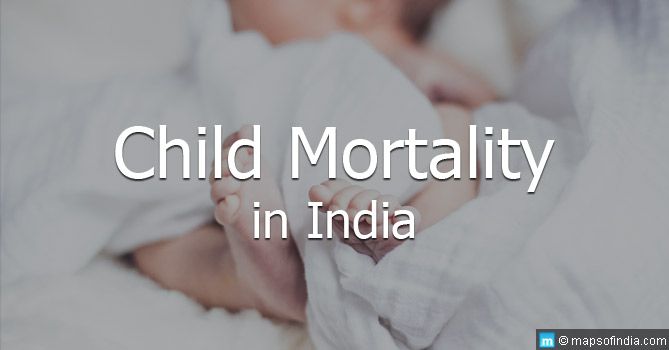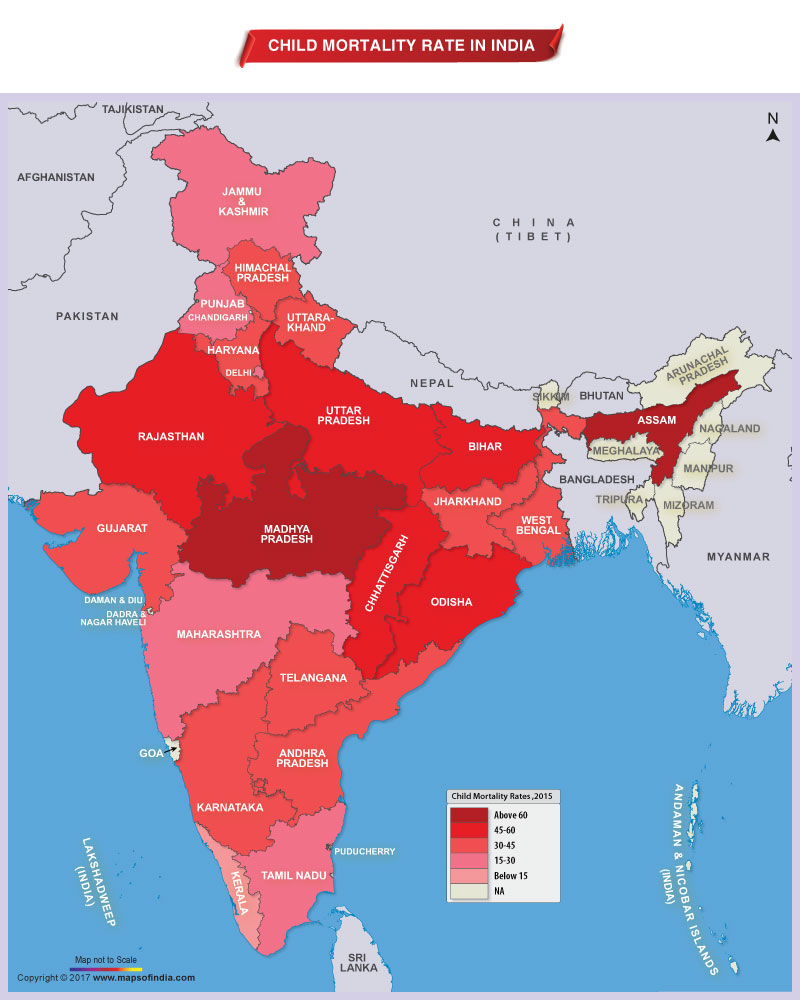Recent news reports of infant deaths in various cities of India have left the country in a state of absolute shock. The deplorable state of child health and mortality in the country has caused much worry among the people. While globally, most countries are registering significant improvements in infant and child mortality rates, India seems to have taken a turn for the worse. In 2016, over 9,00,000 children under the age of 5 lost their lives – this is the highest (under 5) mortality rate in the world and is followed by poop developing nations such as Nigeria (7,00,000 deaths) and Democratic Republic of Congo (3,00,000 deaths).
The Global Burden of Disease Study 2016
The Global Burden of Disease (GBD) Study 2016 that was published in the medical journal, The Lancet, reveals these shocking statistics. About deaths among under 5 children, the report also says that 24·8 percent of under-five deaths (1·2 million deaths) occurred in the South Asia region, 28·1 percent (1·4 million deaths) in western sub-Saharan Africa, and 16·3 percent (0.8 million deaths) in eastern sub-Saharan Africa. The GBD study is a well-known and globally accepted study of health conditions and trends, undertaken by the Institute for Health Metrics and Evaluation (IHME) in Seattle (Washington, USA). It records the mortality trends in 195 countries, recording causes and occurrence of about 330 diseases.
India’s Missing Girls
While the GBD report only takes a look at death and diseases around the globe, India has another major yet silent battle that needs urgent attention. Female feticide is one of the greatest evils that the country has been combatting for a long time now. The 2011 census revealed that while India’s female male ratio stood at 940:1000 (a noticeable growth over the 2001 ration – 927:100), the country’s child gender ratio was still recorded to be on a decline. As of 2011there were 914 girl children to every 1000 boys in the country. Till about 2014, another very alarming trend was recorded in some of the least developed states of the country including Rajasthan, Bihar, Uttar Pradesh, Madhya Pradesh, Jharkhand, Assam, and Odisha – the disappearance of young girls under the age of 4. Concerns of infanticide were raised by the media, social activists and NGOs. Not much has been reported about the situation in recent times but the silence in itself is ominous and does not bode well.
Figuring Out The Causes
We now have ample (and globally acknowledged) evidence that our country is a laggard when it comes to any improvement in child mortality rates but what is really shameful I our lack of attention to what is a very important concern. There has been no major investigation into the causes for such a high death rate among children (unless we count the discussions centered on recent incidents of high infant deaths in Gorakhpur and other government hospitals). A root cause analysis and any constructive action is sadly missing. We are, thus, venturing into a realm of speculation. Communicable diseases, diarrhea, malnutrition etc. have been traditional woes when it comes to the health of children in the country.
Global statistics reveal that diarrhea is a dreaded killer – the fourth largest cause of death of children under the age of 5. In 2015, about 1,00,000 Indian children (under 5) were reported to have died of diarrhea and related conditions. While mortality rates due to this disease is certainly on the decline (particularly with massive awareness campaigns being undertaken), there are other diseases such as dengue and malaria that are becoming killers of children.
Improving Child Nutrition
On the nutrition front, however, the central government seems to have come up with an action plan. The government plans to introduce an incentive based reward scheme for the various districts of the country based on their achievement of nutrition goals set by the centre. This scheme will provide special attention to districts with highest number of children suffering from malnutrition. The government also plans to rank the states and districts on the basis of their individual nutrition levels.
While such generic child mortality improvement plans can sound heartening, what India need and needs on an urgent basis is for the Ministries of Women and Child Development and of Health and Family Welfare to come up with a robust action plan to improve the health and welfare of children in the country.





